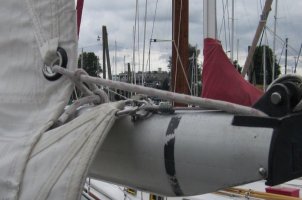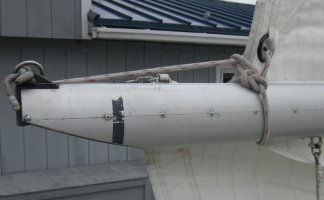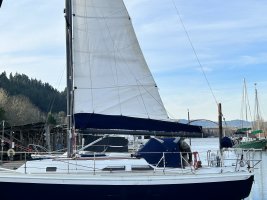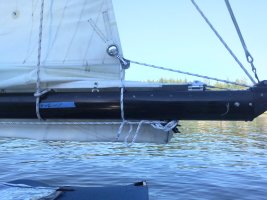I am pretty sure that we have an older thread around here somewhere discussing ways of leading the clew reef lines. Can't find it offhand...

I did just run across a nice video on-line showing how to set up the line to put the correct (approx) 45 degree pull on that reef line that we all have going into a sheave at the rear of the boom.
http://www.youtube.com/watch?v=XbXlEsrlo1s&feature=related
The method illustrated is actually a little bit different than the one we adopted for our own boats about 20 years ago.
Our reef line runs through the cringle like in the video, but then is led down and under the boom and then to a short bowline around itself. Works pretty well so far.
Loren
I did just run across a nice video on-line showing how to set up the line to put the correct (approx) 45 degree pull on that reef line that we all have going into a sheave at the rear of the boom.
http://www.youtube.com/watch?v=XbXlEsrlo1s&feature=related
The method illustrated is actually a little bit different than the one we adopted for our own boats about 20 years ago.
Our reef line runs through the cringle like in the video, but then is led down and under the boom and then to a short bowline around itself. Works pretty well so far.
Loren






